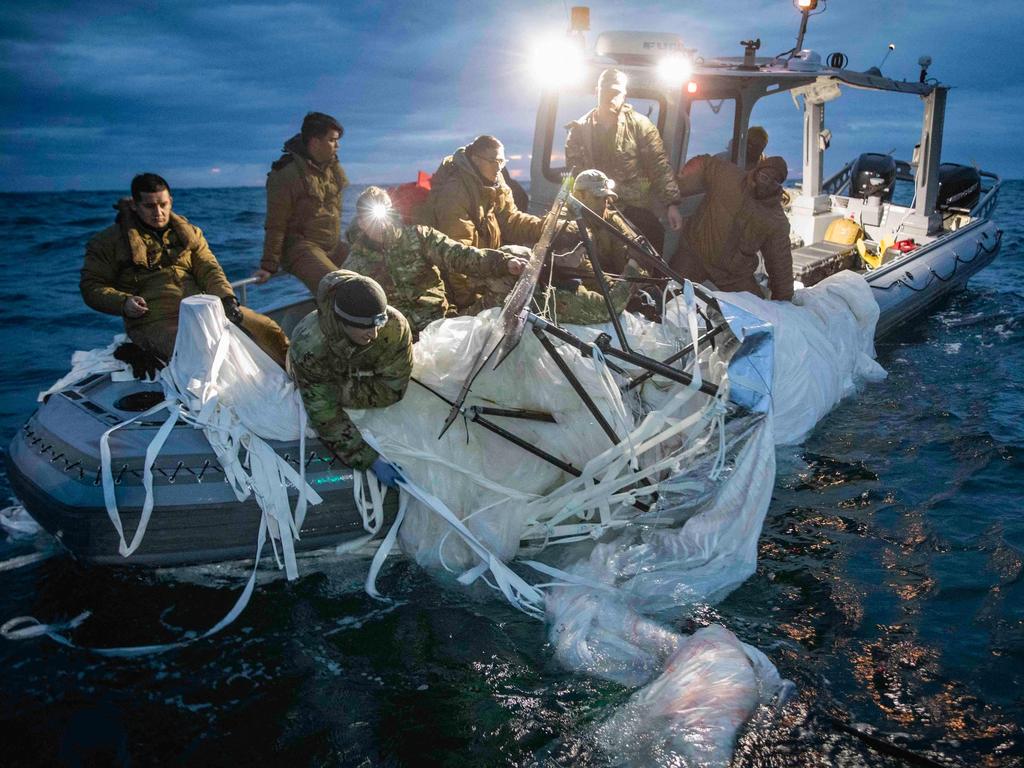Australia has a spy balloon weak spot


If China or any other nation decides to duplicate either mission by sending a balloon over Pine Gap or other Australian defence installations, we do not have an aircraft capable of shooting it down.
The pride of our air force, the problem racked Joint Strike Fighter (F35) has an operational ceiling of around 35,000 feet but the China balloon was travelling between 60,000 and 65,000 feet and the Alaskan balloon around 40,000 feet.

The JSF-F35 can use its afterburners to reach 50,000 feet but it can’t stay there long or it runs out of fuel. Accordingly the China balloon is out of range for the JSF-F35 and the Alaskan object would be difficult for it to shoot down.
The US also has a large JSF/F35 fleet but for both the balloon and object it was forced to use its F-22 aircraft which can comfortably operate at 65,000 feet. If China sends a balloon across Pine Gap or other parts of Australia at 65,000 feet we will need to call on the US to supply an F-22 but because the US no longer makes F-22 aircraft they are scarce and may not be available to do the job.
China has always seen our JSF-F35 as a joke because, like the F-22, the Chinese Chengdu J-20 can also fly at 65,000 feet. It’s not hard to shoot down an aircraft like the JSF-F35 when you are flying so far above it.
It’s ironic that the Chinese balloon, which confirms our weakness, comes almost exactly 20 years after Australia committed to the JSF/F35 program rather than begin negotiating a US invitation to buy the F22 which would have guaranteed air superiority in the region.

In theory the F-22 carried an enormous cost but the JSF/ F35 was at the early design stage and was an effective blank cheque for developer Lockheed Martin. All the early cost and performance JSF-F35 estimates were total fiction.
Then Prime Minister, John Howard, visited Lockheed Martin and was clearly active in the JSF-F35 decision making process. Angus Houston and other defence officials also rejected the F22 approach.
Had we taken up the tentative F-22 approach production of the US aircraft might never been stopped and both the US and Australia would now have a stronger Air Force.
In another coincidence just prior to the balloon passing across Montana, which houses part of the US ballistic missile system, the US Director of Operational Test and Evaluation which monitors the JSF-F35 aircraft (among other defence equipment) for the US Congress issued an alarming annual report about the JSF-F35 aircraft and its continued troubles.
I am often criticised for my adverse comments about the JSF-F35. But my comments are mild compared to the truth which has been revealed to the US Congress.
Here are just a few extracts from the US directors’ remarks on the JSF-F35. I have added a brief comment to some of the remarks.
• “The JSF-F35 program continues to carry a large number of deficiencies … … the overall number of open deficiencies has not significantly decreased …..due to the continued discovery of problems”. That’s a disastrous comment from the director because at last count there were 840 category one and category two JSF-F35 deficiencies. Deficiencies at that level potentially jeopardise the aircraft and its pilot as well as its ability to complete missions.
• “The operational test teams identified deficiencies associated with communication systems weapons, fusion, pilot- vehicle interfaces, and radar”. That covers a big part of the aircraft and its operations.
•“The operational suitability of the F35 fleet remains below service expectations”.
• “The F35 program Continues to field immature, deficient and insufficiently tested block 4 mission systems software to field units. The operational test teams continue to identify deficiencies that require software corrections, and. with them, additional time and resources”.
• “The F35 joint program office has not adequately planned for operational testing of the upgraded hardware configuration referred to as technology Refresh 3”
• Squadrons may not have sufficient test aircraft with adequate capability or sufficient time to test new capabilities before operational employment(
• There is also a shortages of engines which, unless overcome may impact operations until 2028.
Australia purchased 72 of these aircraft because they were declared “operational” so almost certainly Australia is now responsible for our share of the huge cost and delays in enabling “the operational suitability of the F35 fleet” to reach “service expectations”. Meanwhile, Lockheed Martin’s bottoms line benefits.
The above US material would have been available to Stephen Smith and Angus Houston as they finalised their report on the Australian defence situation.
Smith was a former defence minister and theoretically had the opportunity to cancel the JSF-F35 program. It would not have been easy given the ANZUS treaty.
Houston was in a senior air force administration position when the Cabinet decision was made to back the JSF-F35 program rather than advance the US offer to discuss the possible F-22 purchase by Australia.
Both men have seen the consequences of that decision and in theory that makes them ideally placed to reflect on Australia’s past defence decisions and contribute to a plan for the future.





Both the balloon China sent across the US, the “mystery” Alaskan object and another over Canada, graphically illustrate the mistakes we made some 20 years ago in the choice of aircraft to defend Australia.